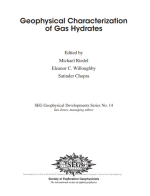Добрый день, Коллеги. Важное сообщение, просьба принять участие. Музей Ферсмана ищет помощь для реставрационных работ в помещении. Подробности по ссылке
Geophysical characterization of gas hydrates / Геофизическая характеристика газовых гидратов
Worldwide supplies of conventional natural gas are declining; new, unconventional forms of energy resources are required to meet the increase in demand. Among these unconventional resources are gas hydrates, which are solid, icelike forms of methane and water that form under lowtemperature and high-pressure regimes. Gas hydrates exist in abundance worldwide, and some estimates suggest that the total amount of natural gas found in gas hydrates may exceed all known conventional gas resources. In addition to their energy potential, scientific interest in gas hydrates has risen in recent years because of possible connections between climate forcing (natural and anthropogenic, in the past, present, and future) and methane trapped in gas-hydrate accumulations. Several large-scale national gas-hydrate programs exist in countries such as Japan, the United States, China, India, and Korea. The past several years have seen a tremendous number of deep-drilling expeditions and other geoscientific studies to understand the natural occurrences of gas hydrates. The completion and dissemination of results from these drilling expeditions has helped the geologic understanding of natural gas-hydrate occurrences evolve toward a gas-hydrate petroleum system. Although our understanding of gas hydrates in marine and permafrost environments has increased and new deposits have been found and described, only one demonstration project, at the Mallik well site (Mackenzie Delta, Northwest Territories, Canada), has been undertaken so far in which gas was produced from a gas-hydrate deposit using the pressure-drawdown technique. Although this production test in 2008 was a milestone in gas-hydrate exploration and exploitation, new or alternative methods of production are needed, and further production tests are required to prove longevity of a given gas-hydrate reservoir. <...>




